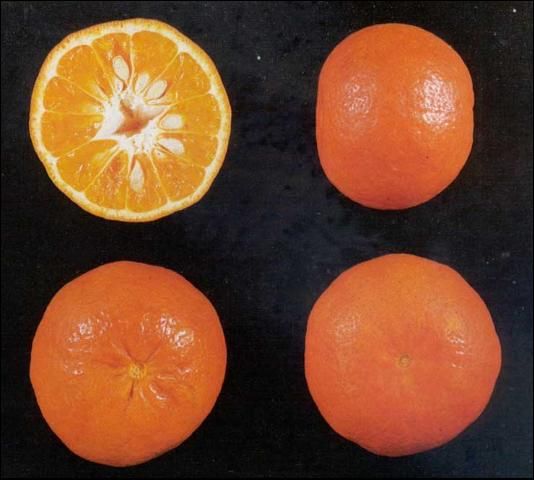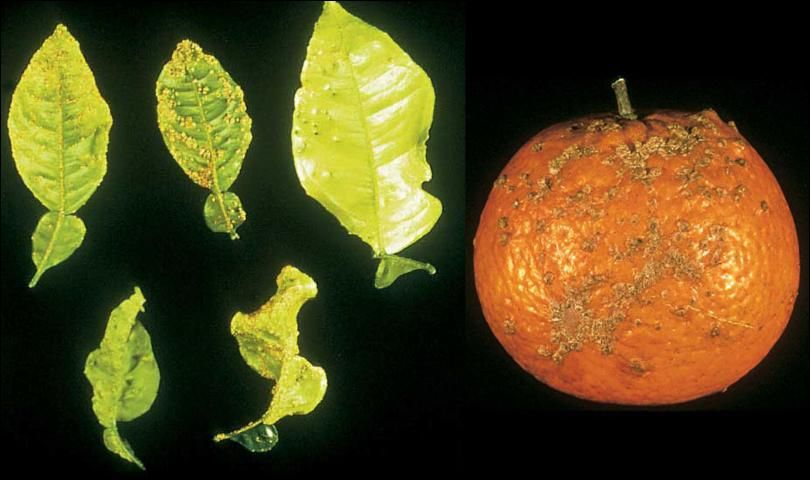Osceola (Figure 1) is one of the released citrus hybrids arising from a cross of Clementine mandarin and Orlando tangelo made by Gardner and Bellows in 1942 at the United States Department of Agriculture Laboratory in Orlando. It was officially released as a variety in 1959 but has never attained important commercial status primarily because of a less than outstanding flavor. The fruit is 3/4 tangerine and 1/4 grapefruit and most closely resembles a tangerine or tangelo.

Credit: UF/IFAS CREC
Fruit Characteristics
Osceola produces a medium-small (2¼"–2¾") highly colored fruit. The rind is thin and leathery and peels rather easily. The peel surface is smooth and glossy. The flesh and juice are well colored with high sugar and high acid which is not the best combination for some palates. Seed numbers vary with cross-pollination with 15–25 seeds per fruit when pollenizer varieties are nearby. Cross-pollination is essential to ensure good productivity and to enhance fruit size. Orlando tangelo and Temple appear to be good pollenizers for Osceola. The fruit (and leaves) is susceptible to scab fungus (Figure 2). Harvesting Osceola should be done with clippers to avoid tearing of the peel (plugging).

Credit: UF/IFAS CREC
The fruit shape is somewhat flattened, and the commercial harvest season is the October-November period.
The use of the growth regulator gibberellic acid (GA) may increase fruit set and yields.
Tree Characteristics
The Osceola tree is not particularly distinctive, being rather upright, densely foliated, and virtually thornless. The variety has not been evaluated on a wide range of rootstocks but should do well on most, especially those that accentuate fruit quality. The tree is fairly cold hardy, but the thin-skinned fruit are not. The leaves (and the fruit) are scab susceptible.
Care should be taken when selecting budwood as this variety is susceptible to the viroid disease - cachexia (xyloporosis). Propagation from xyloporosis-infected trees can result in tree decline and reduced tree life.
Cultivation
Osceola should perform much in the same way as other similar cultivars. Some potential areas of concern have been noted below:
- Osceola requires cross-pollination for maximum fruit set and fruit size. Temple and Orlando are recommended pollenizers. This cultivar is not a good pollen source for any of the hybrids except Orlando.
- Osceola is susceptible to scab fungus disease and will require a careful spray program for control, especially during the spring months. For more information on citrus scab see Florida Citrus Production Guide: Citrus Scab.
- Fruit rind of Osceola can become puffy if held on the tree too long.
- Small fruit size is sometimes a problem.
More Information
Reece, P.C. and F.E. Gardner. 1959. "Robinson, Osceola and Lee — New Early Maturing Citrus Hybrids." Proc. Fla. State Hort. Soc. 72:40-51.
Saunt, James. 2000. Citrus Varieties of the World. Sinclair International Limited. Norwich, England. p. 70.